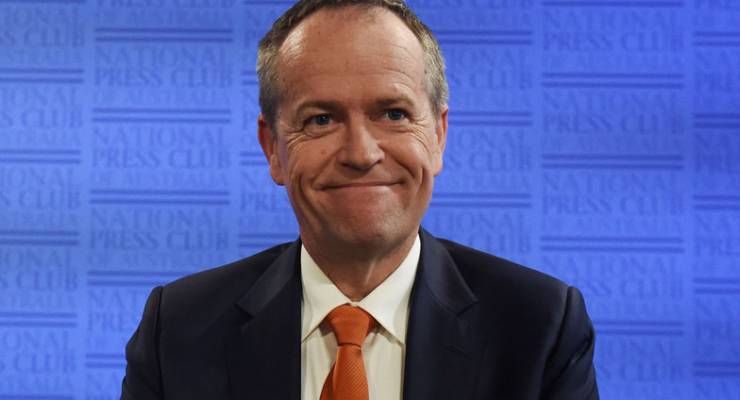
Labor’s vote is buoyant across most states and federally even as Malcolm Turnbull arrests a worrying slide in his approval rating, today’s Essential Report shows.
The Prime Minister’s approval rating reached a nadir in the immediate aftermath of the election, and he remains in negative territory, but the eight-point net disapproval rating in September has shrunk to just three points, with 38% of voters approving of his performance and 41% disapproving. Opposition Leader Bill Shorten has continued to mark time in the same position as he has been in for months, with 37% of voters approving of his performance and 40% disapproving, compared to 36%-41% in September. There’s been little shift on preferred prime minister: Turnbull leads Shorten 41% to 28%.
Labor’s primary vote at the federal level is on 36%; the Coalition’s vote is down two points to 38%, and the Greens are up two points to 10%; One Nation and NXT remain on 6% and 3% respectively, for a two-party preferred outcome of 52%-48% in Labor’s favour.
In NSW, the Baird government maintained its lead over Labor for the three months from July to September, 52%-48%. However, in September (monthly sample: 1191 voters) the NSW Coalition’s primary vote fell three points to 42% from August while Labor gained three points to 39%; the Greens were on 9%, for a two-party preferred outcome of 50%-50%, a big change from late 2015 and early 2016 when Baird’s government led Labor by 12 points.
In Victoria, suggestions the Andrews government is in trouble don’t appear too plausible: its quarterly average for July to September was 53%-47% two-party preferred, the same as in April to June, and in September (sample 892) its primary vote was 41% (up two points over the quarter) while the Coalition was down a point to 38% and the Greens were on 12%.
In Queensland, the Palaszczuk government increased its lead over the LNP to 53%-47% across the quarter, although the smaller sample size means greater volatility; in September (sample: 701) Labor’s vote was down five points in a month and the LNP was up two. The Queensland Greens are on 8% and One Nation on 10%, which is still a 52%-48% lead to Labor.
In South Australia, confident media predictions that the Weatherill government is doomed appear astray: the quarterly result (total sample: 942 across three months) shows Labor lifting its lead substantially to 54%-46%, with Labor on 38%, the Liberals on 30% and NXT on 16%, suggesting the fate of the election is in the hands of NXT voters and their second preferences. And the quarterly result won’t include much of the political impact from the recent statewide blackout.
On that front, attempts by the Coalition and media outlets such as the ABC to blame renewable energy for the South Australian blackouts don’t appear to wash with voters. Sixty per cent of voters say “the power black out would have occurred regardless of how the electricity was produced” compared to 17% who accept the Coalition-ABC line that “the power black out was a result of too much reliance on renewable energy”. Unusually, even Coalition voters reject the blame renewables narrative.
In Western Australia, the recent travails of the Barnett government have had a predictable impact: support for the Liberals has fallen three points to 34% and the Nationals to 4%; Labor remains on 39%; the Greens are up a point to 11% for a two-party preferred outcome, from a quarterly sample of 1115, of 53%-47% to Labor.









Was it the ABC or Chris Uhlman who reckoned he knew that it was renewables at fault, still sticking to it on Insiders to Murphy’s disgust.
I live in Adelaide…Chris Uhlman and the ABC are way out of line, and I’m not surprised by these poll results. That said…we are still being treated to a daily letters page in the local Ltd News rag denigrating the Premier’s position, for the most part.
On the day that the power failure occurred, Jay Wetherill was on radio quite quickly, and his opening remarks were that he had ‘just spoken to all the experts’ followed by a summary of what was going on. I don’t think there is ANY evidence, which has been produced since then, that has/will change the fact that renewable energy had NOTHING to do with the power blackout.
Some people just like to play politics…’spin’ a whole lot of rubbish, if you like!